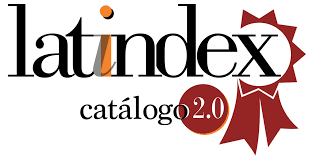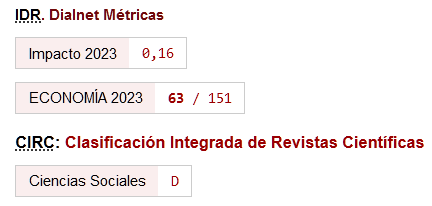Omertà, vendetta and good economic performance of the criminal organizations
Keywords:
Economic isntitution, omertà, vendetta, informations costs, fulfillment of agreementAbstract
The codes of omertà (law of silence) and vendetta (revenge) function as economic institutions of criminal organizations. The omertà manages the information costs in the businesses of these organizations and the vendetta reinforces the fulfillment of agreements in them. Both reinforce each other and make possible the good performance of these businesses despite developing in a very hostile environment. This helps explain the persistence of these businesses and the strength of the criminal organizations that manage them. In crimes such as drug trafficking this translates in that the supply side is very resistant and, if the demand is solvent, the business is inevitable and very profitable. The conventional criminal policy, focused on attacking the offer, is insufficient; or the demand is reduced or the link between the two is articulated in another way.
Downloads
References
Abadinsky, Howard (2010): Organized Crime, Belmont: Wadsworth, Cengage Learning.
Abbate, Lirio y Gómez, Peter (2006): Cómplices. Todos los hombres de Provenzano. De Corleone al Parlamento, Barcelona: Ediciones Península, 2008.
Akers, Ronald L. (2002): "A Social Learning Theory of Crime" en Suzette Cote (ed.) Criminological Theories: Bridging the Past to the Future, Thousand Oaks: SAGE Publications, pp. 135-143.
Allum, Felia (2014): "Understanding criminal mobility: the case of the Neapolitan Camorra", Journal of Modern Italian Studies, Nº 19:5, pp. 583-602.
https://doi.org/10.1080/1354571X.2014.962257
Allum, Felia (2016): The Invisible Camorra: Neapolitan Crime Families across Europe, Ithaca and London: Cornell University Press.
https://doi.org/10.7591/9781501705830
Aoki, Masahiko (2010): "Understanding Douglass North in game-theoretic language", Structural Change and Economic Dynamics, Nº 21, pp. 139-146.
https://doi.org/10.1016/j.strueco.2009.10.002
Bentham, Jeremy (1954): Escritos económicos. Ciudad de México: Fondo de Cultura Económica.
Bermejo Marcos, Fernando (2015): Breve historia de La Camorra, Madrid: Ediciones Nowtilus.
Camilleri, Andrea (2007): Vosotros no sabéis. Los Amigos, los Enemigos, la Mafia y el Mundo en los Pizzini de Bernardo Provenzano, Barcelona: Ediciones Salamandra, 2008.
Carretero, Nacho (2015): Fariña, Madrid: Libros del K.O.
Catino, Maurizio (2014): "How Do Mafias Organize? Conflict and Violence in Three Mafia Organizations", European Journal of Sociology, Nº 55(2) pp. 177-220.
https://doi.org/10.1017/S0003975614000095
Champeyrache, Clotilde (2014): "Artificial Scarcity, Power, and the Italian Mafia". Journal of Economic Issues, vol. 48, Nº 3, pp. 625-639.
https://doi.org/10.2753/JEI0021-3624480302
Cohen, Lawrence E. y Felson, Marcus (1979): "Social Change and Crime Rate Trends: A Routine Activity Approach", American Sociological Review, Nº 44 (August) pp. 588-608.
https://doi.org/10.2307/2094589
Cottino, Amedeo (1999): "Sicilian cultures of violence: The interconnections between organized crime and local society", Crime, Law and Social Change, Nº 32, pp. 103-113.
https://doi.org/10.1023/A:1008389424861
Council of Europe (2005): Organised crime situation report 2005. Focus on the threat of economic crime, Strasbourg: Department of Crime Problems, Council of Europe.
Denzau, Arthur T. y North, Douglass C. (1994): "Shared Mental Models: Ideologies and Institutions", Kyklos, vol. 47, Nº 1, pp. 3-31.
https://doi.org/10.1111/j.1467-6435.1994.tb02246.x
Dickie, John (2004): Cosa Nostra, Barcelona: Random House Mondadori, 2011.
Dickie, John (2015): Historia de la mafia. Cosa Nostra, 'Ndrangheta y Camorra de 1860 al presente, Barcelona: Penguin Random House, 2015.
Domínguez Gabiña, Iñigo (2014): Crónicas de la mafia, Madrid: Libros del K.O.
Easley, David y Kleinberg, Jon (2010): Networks, Crowds, and Markets: Reasoning about a Highly Connected World, Cambridge: Cambridge University Press.
https://doi.org/10.1017/CBO9780511761942
EMCDDA y Europol (European Monitoring Centre for Drugs y Drug Addiction y Europol) (2016): EU Drug Markets Report: In-Depth Analysis, Luxembourg: EMCDDA-Europol Joint publications, Publications Office of the European Union.
Eurispes (2016): Criminalità: la mappa del territorio da Sud a Nord con l'Indice IOC, Roma: Institute of Political, Economic and Social Studies. [Disponible en: http://www.eurispes.eu/content/criminalit%C3%A0-la-mappa-del-territorio-da-sud-nord-con-lindice-ioc, Acceso: 23-7-2018].
Falcone, Giovanni (1991): Cosas de la Cosa Nostra (con Marcelle Padovani). Barcelona: Ediciones Barataria, 2006.
Felin, Teppo y Foss, Nicolai J. (2011): "The endogenous origins of experience, routines, and organizational capabilities: the poverty of stimulus", Journal of Institutional Economics, vol.7, Nº 2, pp. 231-256.
https://doi.org/10.1017/S1744137410000214
Felson, Marcus (1995): "Those who discourage crime" en John E. Eck y David Weisburd (eds.) Crime and place, Monsey, NY: Criminal Justice Press, pp. 53-66.
Finckenauer, James O. (2005): "Problems of Definition: What Is Organised Crime?" Trends in Organized Crime, Nº 3, pp. 63-83.
https://doi.org/10.1007/s12117-005-1038-4
Finckenauer, James O. y Voronin, Yuri A. (2001): The Threat of Russian Organized Crime. Issues in International Crime, Research Report, vol.2, Washington: National Institute of Justice, U.S. Department of Justice.
Fiorentini, Gianluca y Peltzman, Sam (eds.) (1995): The economics of organised crime, Cambridge: Cambridge University Press.
https://doi.org/10.1017/CBO9780511751882
Forgione, Francesco (2008): 'Ndrangheta. La mafia menos conocida y más peligrosa del planeta, Barcelona: Ediciones Destino, Barcelona, 2009.
Forgione, Francesco (2009): Mafia export. Cómo la 'Ndrangheta, la Cosa Nostra y la Camorra han colonizado el mundo, Barcelona: Editorial Anagrama, 2010.
Franchetti, Leopoldo (1993): "Condiciones administrativas y políticas de Sicilia" en Alexis de Tocqueville, Gaetano Mosca y Leopoldo Franchetti, Los orígenes de la Mafia, Madrid: Capitán Swing Libros, 2009, pp. 149-461.
Frattini, Eric (2013): Mafia. Un siglo de Cosa Nostra. Guadalajara: Poe Books.
Friman, H. Richard (2009): "Externalizing the Cost of Prohibition" en H. Richard Friman (ed.) Crime and the Global Political Economy, Boulder: Lynne Rienner Publishers, pp. 49-65.
https://doi.org/10.1515/9781685854331-005
Gintis, Herbert (2007): "A framework for the unification of the behavioral sciences", Behavioral and Brain Sciences, Nº 30(1), pp. 1-16.
https://doi.org/10.1017/S0140525X07000581
Glenny, Misha (2008): McMafia. El crimen sin fronteras, Barcelona: Ediciones Destino, 2009.
Gottschalk, Petter (2009): Entrepreneurship and Organised Crime. Entrepreneurs in Illegal Business. Cheltenham: Edward Elgar Publishing.
https://doi.org/10.4337/9781848447332.00005
Gratteri, Nicola y Nicaso, Antonio (2008): Hermanos de sangre. Historias de la 'Ndrangheta, la mafia más poderosa, Barcelona: Random House Mondadori, 2009.
Greif, Avner (2006): Institutions and the Path to the Modern Economy. Lessons from Medieval Trade, Nueva York: Cambridge University Press.
https://doi.org/10.1017/CBO9780511791307
Gribaudi, Gabriella (1990): "Mafia, culturas y grupos sociales", Debats, 1992, Nº 42, pp. 64-68.
Grillo, Ioan (2011): El Narco. En el corazón de la insurgencia mexicana, Barcelona: Ediciones Urano, 2012.
Hannan, Michael T. y Freeman, John (1989): Organizational Ecology. Cambridge: Harvard University Press.
https://doi.org/10.4159/9780674038288
Hernández, Anabel (2010): Los señores del narco, Barcelona: Ramdom House Mondadori.
Hobsbawm, Eric (1965): "La Mafia" en Alexis de Tocqueville, Gaetano Mosca y Leopoldo Franchetti, Los orígenes de la Mafia, Madrid: Capitán Swing Libros, 2009, pp. 43-80.
Land, Frank; Amjad, Urooj y Nolas, Sevasti-Melissa (2007): "The Ethics of Knowledge Management", International Journal of Knowledge Management, vol. 3, Nº 1, pp. 1-9.
https://doi.org/10.4018/jkm.2007010101
Le, Vy (2012): "Organised Crime Typologies: Structure, Activities and Conditions", International Journal of Criminology and Sociology, Nº 1, pp. 121-131.
https://doi.org/10.6000/1929-4409.2012.01.12
Levitt, Barbara y March, James G. (2012): "Organizational Learning" en Mary Godwyn y Jody H. Gittell (eds.) Organizations. Structures and Relationships, Thousand Oaks: Pine Forge Press, pp. 616-630.
Levy, Ayda (2012): El Rey de la Cocaína, Barcelona: Random Huose Mondadori.
Lewis, Norman (1951): La Honorable Sociedad. La mafia siciliana y sus orígenes. Barcelona: Alba Editorial, 2009.
Lupo, Salvatore (2004): Historia de la mafia. Desde sus orígenes hasta nuestros días, Ciudad de México: Fondo de Cultura Económica, 2009.
Manjón-Cabeza, Araceli (2012): La solución. La legalización de las drogas. Barcelona: Random House Mondadori.
Mantzavinos, Chrysostomos; North, Douglass C. y Shariq, Syed (2004): "Learning, Institutions, and Economic Performance", Perspectives on Politics, vol. 2, Nº 1, pp. 75-84.
https://doi.org/10.1017/S1537592704000635
March, James G. (1994): A Primer on Decision Making. How Decisions Happen, New York: The Free Press.
Marett, Robert R. (1921): "The Vendetta", 3 J. Comp. Legis. & Int'l L. 3rd Ser. Pt. I, pp. 39-44. Disponible en: HeinOnline (http://heinonline.org) [Acceso 25-1-2016].
Merton, Robert K. (1938): "Social Structure and Anomia". American Sociological Review, Nº 3(5), pp. 672-682.
https://doi.org/10.2307/2084686
Mintzberg, Henry (1979): The Structuring of Organizations: A Synthesis of Research., NJ: Prentice-Hall.
Mintzberg, Henry (1989): Mintzberg y la dirección, Madrid: Ediciones Díaz de Santos, 1991.
Mosca, Gaetano (1901): "¿Qué es la Mafia?" en Alexis de Tocqueville, Gaetano Mosca y Leopoldo Franchetti, Los orígenes de la Mafia, Madrid: Capitán Swing Libros, 2009, pp. 109-148.
Murrell, Peter (1992): "Evolution in Economics and in the Economic Reform of the Centrally Planned Economies" en Christopher Clague y Gordon C. Rausser (eds.) The Emergence of Market Economies in Eastern Europe, pp. 35-53. Cambridge: Blackwell Publishers.
Nelson, Richard R. y Winter, Sidney G. (1982): An Evolutionary Theory of Economic Change, Cambridge y Londres: Harvard University Press.
Neri, Giovanni (2014): "Il fenomeno del pentitismo nella prospettiva criminologica integrata", Temi Romana, Nº 62(1-2): 29-34.
North, Douglass C. (1990): Institutions, institutional change and economic performance, Cambridge: Cambridge University Press.
https://doi.org/10.1017/CBO9780511808678
North, Douglass C. (1991): "Institutions", Journal of Economic Perspectives, Nº 5(1), pp. 97-112.
https://doi.org/10.1257/jep.5.1.97
North, Douglass C. (2005): Understanding the Process of Economic Change, Princeton: Princeton University Press.
North, Douglass C. y Miller, Roger L. (1978): The Economics of Public Issues, Nueva York: Harper & Row Publishers, pp. 125-132.
North, Douglass C.; Wallis, John J. y Weingast, Barry R. (2009): Violence and Social Orders. A Conceptual Framework for Interpreting Recorded Human History, Cambridge: Cambridge University Press.
https://doi.org/10.1017/CBO9780511575839
Osorno, Diego E. (2015): La Guerra de Los Zetas. Viaje por la frontera de la necropolítica, Barcelona: Penguin Random House, 2017.
Ostrom, Elinor (2004): "Rules without enforcement are but words on paper", Newsletter of the International Human Dimensions Programme on Global Change, Nº 2, pp. 8-10. (Disponible en: http://www.ihdp.unu.edu/docs/Publications/Secretariat/Update-Dimensions/IHDP-Update-2004-2.pdf, Acceso: 17-7-2018).
Paoli, Letizia (2003): Mafia Brotherhoods: Organized Crime, Italian Style. New York: Oxford University Press.
Polanyi, Karl (1944): La gran transformación. Crítica del liberalismo económico, Madrid: Ediciones de La piqueta, 1989.
Ravelo, Ricardo (2012): Narcomex. Historias e historia de una guerra, Barcelona: Random House Mondadori.
Riera, Alejandro (2008): La Organizatsja. La mafia rusa, la mafia roja, Córdova: Arcopress.
Ruggiero, Vincenzo (2013): Los crímenes de la Economía. Un análisis criminológico del pensamiento económico, Madrid: Marcial Pons, 2018.
Salazar, Alonso (2012): La parábola de Pablo. Auge y caída del narcotraficante más famoso de todos los tiempos, Barcelona: Ediciones Península, 2016.
Sánchez García de Paz, Isabel (2005): "El coimputado que colabora con la justicia penal (con atención a las reformas introducidas en la regulación española por las Leyes Orgánicas 7/ y 15/2003)", Revista Electrónica de Ciencia Penal y Criminología (en línea), Nº 07-05, pp. 05:1-05:33, Disponible en internet: http://criminet.ugr.es/recpc/07/recpc07-05.pdf
Saviano, Roberto (2006): Gomorra. Un viaje al imperio económico y al sueño de poder de la Camorra. Barcelona: Random House Mondadori, 2007.
Saviano, Roberto (2013): CeroCeroCero. Cómo la cocaína gobierna el mundo, Barcelona: Anagrama, 2014.
Savona, Ernesto U. y Berlusconi, Giulia (eds.) (2015): Organized Crime Infiltration of Legitimate Businesses in Europe: A Pilot Project in Five European Countries, Trento: Transcrime - Università degli Studi di Trento. [Disponible en: http://arielproject.eu/wp-content/uploads/2015/11/Project-ARIEL_Final-report.pdf, Acceso: 3-1-2016].
Sciascia, Leonardo (1989): Para una memoria futura (Si la memoria tiene futuro), Barcelona: Tusquets Editores, 2013.
Suárez, Felipe (2017): La Operación Nécora +, Cádiz: Quorum Editores.
Taylor, Ian (1982): "Against Crime and for Socialism", Crime and Social Justice, Nº 9(18) pp. 4-15.
Turone, Giuliano (2008): Il delitto di associazione mafiosa. Milano: Giuffrè Editore.
UNODC (United Nations Office on Drugs and Crime) (2010): The Globalization of Crime - A Transnational Organized Crime Threat Assessment. Vienna: United Nations publication.
Wainwright, Tom (2016): Narconomics. Cómo administrar un cártel de la droga. Barcelona: Penguin Random House, 2018.
Walsh, Anthony (2000): "Behavior Genetics and Anomie/Strain Theory", Criminology, Nº 38(4) pp. 1075-1107.
https://doi.org/10.1111/j.1745-9125.2000.tb01415.x
Walters, Glenn D. (2006): Lifestyle Theory: Past, Present and Future, New York: Nova Science Publishers.
Winter, Harold (2008): The Economics of Crime. An introduction to rational crime analysis. Nueva York: Routledge.
Winter, Sidney G. (2003): "Understanding Dynamic Capabilities", Strategic Management Journal, vol. 24, Nº 10, pp. 991-995.
Downloads
Published
How to Cite
Issue
Section
License
This licence allows third parties to share (copy and redistribute the material in any medium or format) and adapt (remix, transform and create from the material for any purpose, including commercial purposes), provided that authorship and first publication in this journal (The Journal, DOI of the work) is acknowledged, a link to the licence is provided, and it is stated whether changes have been made to the work.







